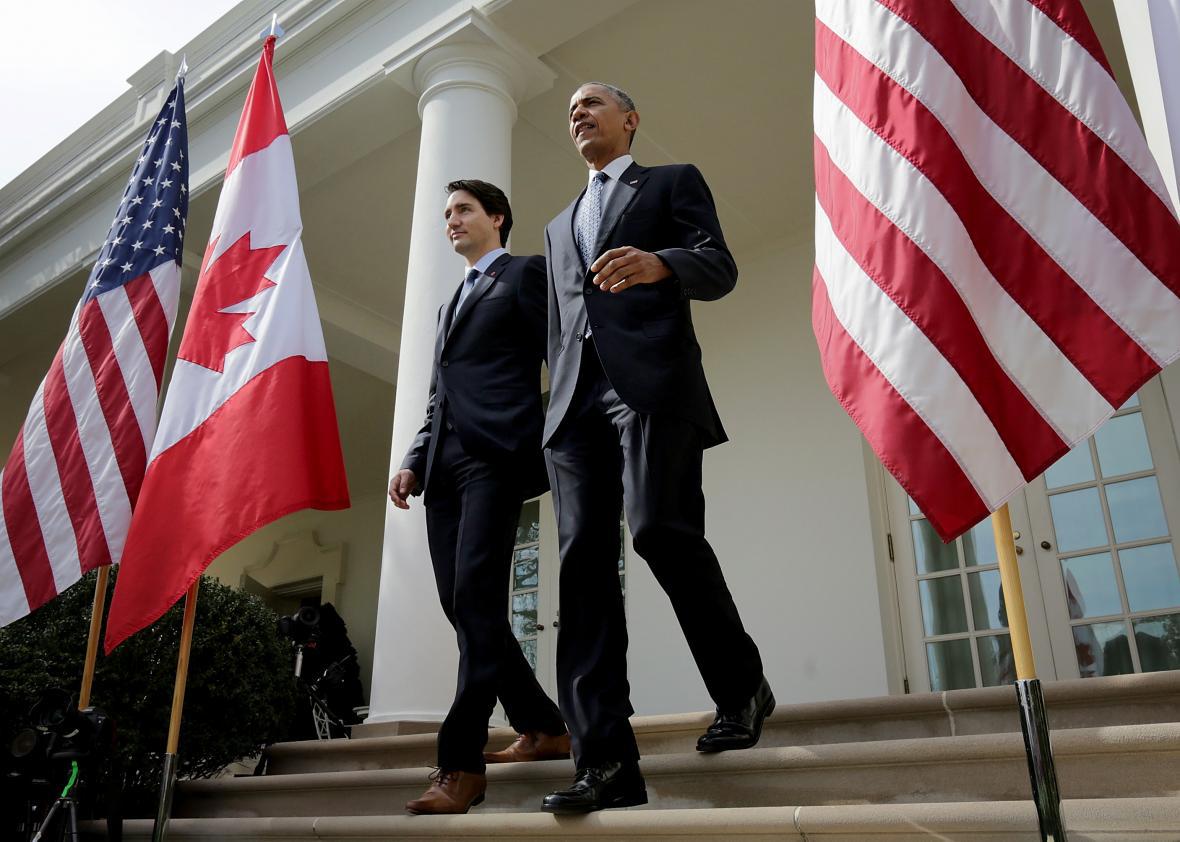On Thursday, during the first official visit to Washington by a Canadian leader in 19 years, Prime Minister Justin Trudeau and President Obama focused on the environment.
The meeting comes at an opportune time. According to preliminary data, large parts of the Arctic were more than 10 degrees Celsius (18 degrees Fahrenheit) warmer than normal this winter—essentially skipping the season entirely. Yes, it’s an El Niño year, which typically results in warmer temperatures worldwide, but what’s going on in the Arctic now is a preview of what will happen when climate change crosses the tipping point. Climate scientists working in the Arctic are trying desperately to sound the alarm.
In a joint statement, Obama and Trudeau pledged to work together to boost investment in clean energy; establish a pan-Arctic marine protection network and low-impact Arctic shipping corridors; limit greenhouse gas emissions, including methane; and pursue a number of other initiatives designed to slow global warming and speed up protection of the fragile Arctic. As Mashable reports, the emerging North American alliance on climate change comes after decades of rancor between the two countries on the environment—but depending on who wins the White House this November, the partnership may not last long.
The new initiatives close a loophole in one of Obama’s prior actions on climate change. Just last year, the Obama administration announced a new methane initiative designed to reduce emissions of the potent greenhouse gas from the oil and gas sector by 40 to 45 percent in just 10 years. Problem is, last year’s action applied only to future fossil fuel infrastructure.
Thursday’s announcement mostly rectifies that oversight, and given new research that’s been revealed in the meantime, that’s good news: Existing fossil fuel infrastructure in the United States is leaking methane at worrying rates. A single recent leak in California—one of the worst environmental disasters in U.S. history—released as much methane as the entire typical annual emissions of some small European countries. In February, a Harvard study showed that the U.S. may singlehandedly be responsible for 30 to 60 percent of the global growth in methane emissions over the past 14 years, largely related to uncontrolled leaks in the oil and gas sector. Since methane is 86 times more powerful than carbon dioxide on a 20-year timescale, leaks like these are a huge deal.
The new initiative on methane isn’t a panacea—for example, it doesn’t include emissions from the agriculture industry, which produces more methane than the entire fossil fuel industry. And, as Politico explains, implementing the new methane restrictions will likely fall to the next president—an EPA fact sheet released Thursday showed that thousands of oil and gas wells would have to be examined first.
Thursday’s announcement also suggested that before he leaves office, Obama will unveil a comprehensive plan to induce a profound shift in the nation’s energy system for decades to come. Of course, that plan won’t mean much if we don’t elect a climate-friendly president in 2016.
